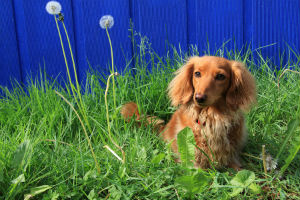Get Stuck In The Weeds, It's Good For You!
- Posted on
- By Dr. Jill Tack
- Posted in dandelion, marshamallow root, marshmallow, medicinal qualities, parsley, pharmaceutical, plantain, weeds
- 0

Let's celebrate all of those medicinal plants, often referenced as weeds, you can find in our backyards, parks, and everywhere else plants grow. You could spend your lifetime learning about the healing properties of plants and herbs. It is great to add them to you and your pets everyday life to improve your health and wellbeing.
It’s National Weed Appreciation Day! No, no, not that “weed”. There are other days to celebrate specifically marijuana. Today is about celebrating all of those medicinal plants, often referenced as weeds, you can find in our backyards, parks, and everywhere else plants grow.
Plants have been part of the natural health world for thousands of years. Before pharmaceutical drugs were available, people used plants as part of their healing toolbox. Many of the drugs that we now use from a laboratory originated from plants and their chemical compounds synthetically replicated to make those drugs. Let's learn more about some powerhouse weeds that are great sources of medicinal elements.
Dandelion
The mighty dandelion is most suburban dwellers arch-nemesis. Often categorized as a weed, have you ever stopped to look at all of a dandelion's properties that can help bring the body into balance? And did you know it also brings your front yard and soil back into balance as well?
The entire plant from top to bottom can be used. You might even see dandelion greens in your local grocery store for salads, sauteeing, smoothies, or juicing. The root is known to support the liver, gallbladder, and digestive system.
Marshmallow
This plant grows wild here in Michigan. It appeared in our backyard one summer without us planting it. We love suggesting marshmallow root tincture to our cat customers that have issues with hairballs. It is what we call a mucilaginous herb. It's properties help soothe inflamed mucous membranes but also has a slippery component to help a cat pass hairballs without using petroleum-based remedies.
Catnip
How many of you have catnip that grows wild in your yard in the summer months? I have a large clump myself. Many of us are familiar with catnip because our cats go crazy when they smell it and roll around with it. However, it also makes for a very mild tea which is great in reducing fevers as well as calming the stomach. If you haven’t made a catnip tea for yourself, I challenge you to give it a try!
Parsley
Although it is often thought of as a culinary herb, parsley is easy to grow in the summer months in Michigan. Parsley is great to add to your pet's meals on a daily basis to help with bad breath and supporting the stomach. It also has a mild diuretic property so, in this case, “less is more” when adding to your pets daily routine. Most often you can just toss chopped up parsley into your pet's bowl with dry, canned, raw, or dehydrated foods to get them to eat it.
Plantain
Most of you have this growing within your surroundings and don’t even know it! This plant is different than the tropical fruit. Plantain is the first plant I look for when on camping trips to see if there is any nearby to handle a "just in case" circumstance. Plantain is most well known for its healing skin and wound properties. It is also fantastic for stings and bites from bees, ants, mosquitos, snakes, and other stinging insects. When in an emergency you can chew up one of the leaves from the plantain plant and make a quick poultice on the affected area to draw out venom, reduce swelling, and begin healing.
Plants and herbs often get a bad wrap because the pharmaceutical world doesn’t believe in their healing powers and attributes. Plants are a complex study of how they work with the body, a person or pet's constitution, and what chemical constituents of the plant melds best with a person. Plants cannot be patented therefore do not provide a large monetary income for the pharmaceutical industry so they often overlook herbs for healing use when you visit your doctor. You could spend your lifetime learning about the healing properties of plants and herbs. It is great to add them to you and your pets everyday life to improve your health and wellbeing.
How many “weeds” do you have growing in your yard? This is a small list from my yard: echinacea, catnip, dill, horseradish, peppermint, marshmallow, hyssop, valerian, motherwort, butterfly weed, lavender, angelica, nettle, Solomon's seal, goldenrod, lemon balm, plantain, and spearmint. All of these plants have been incorporated into my landscaping and most would never think twice about using them for medicine!


Great info! Love it! :-)